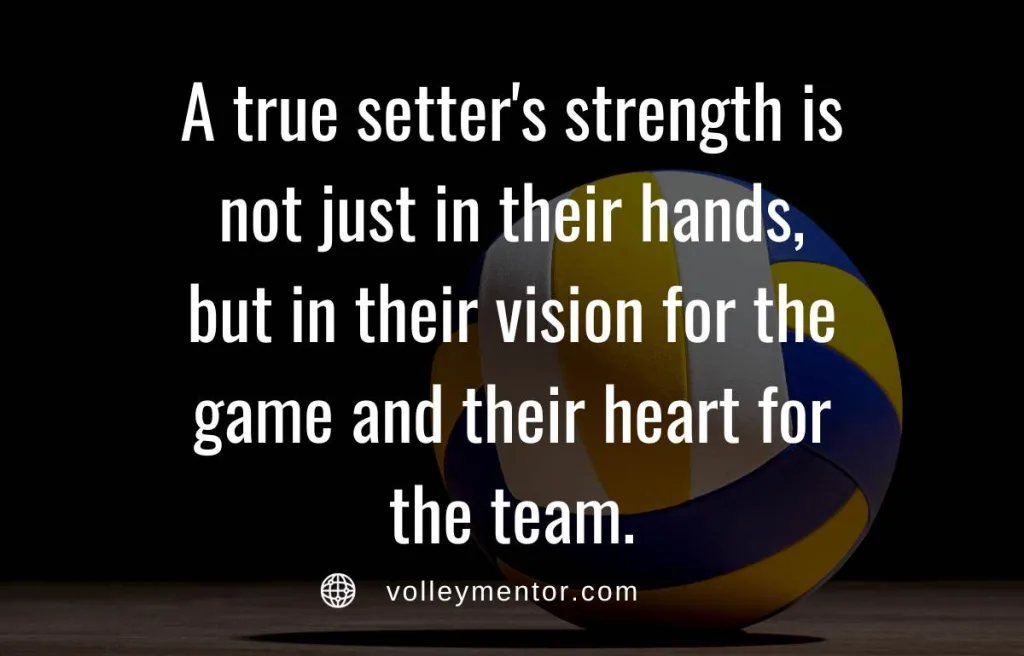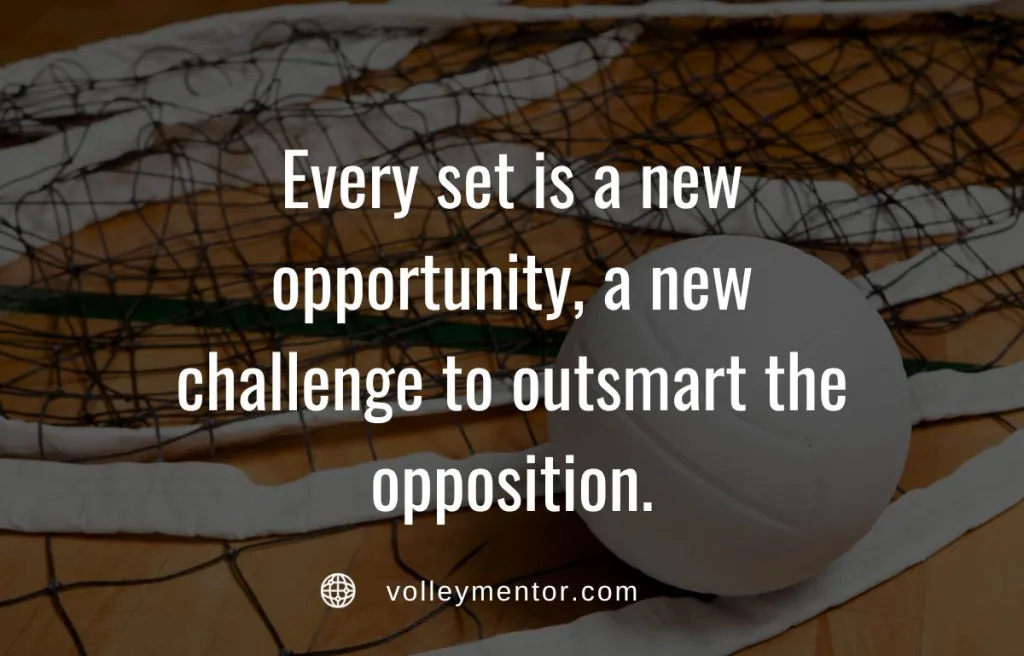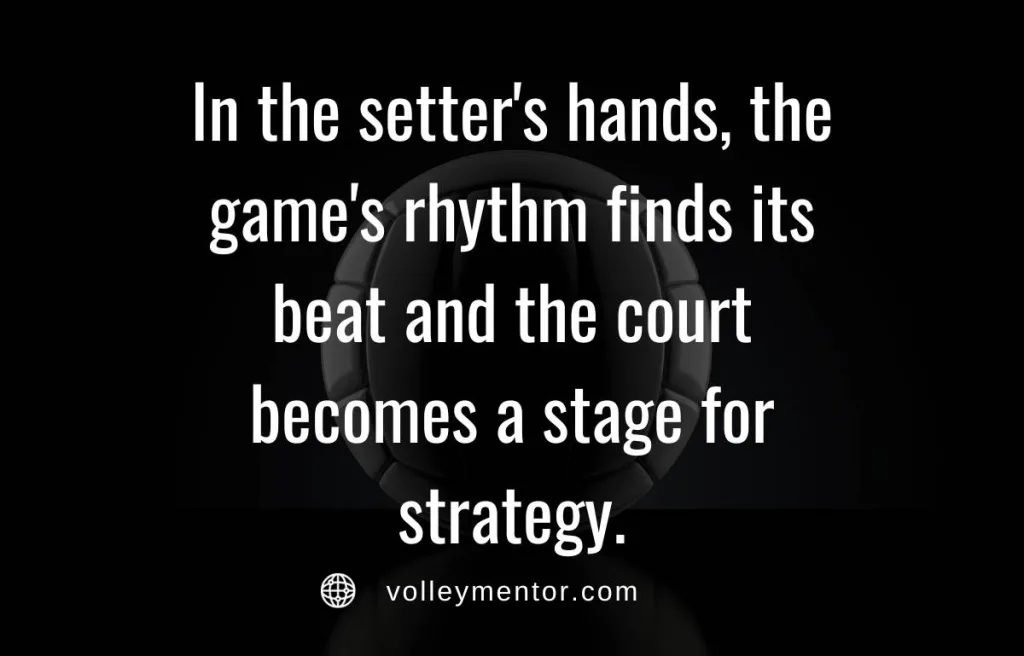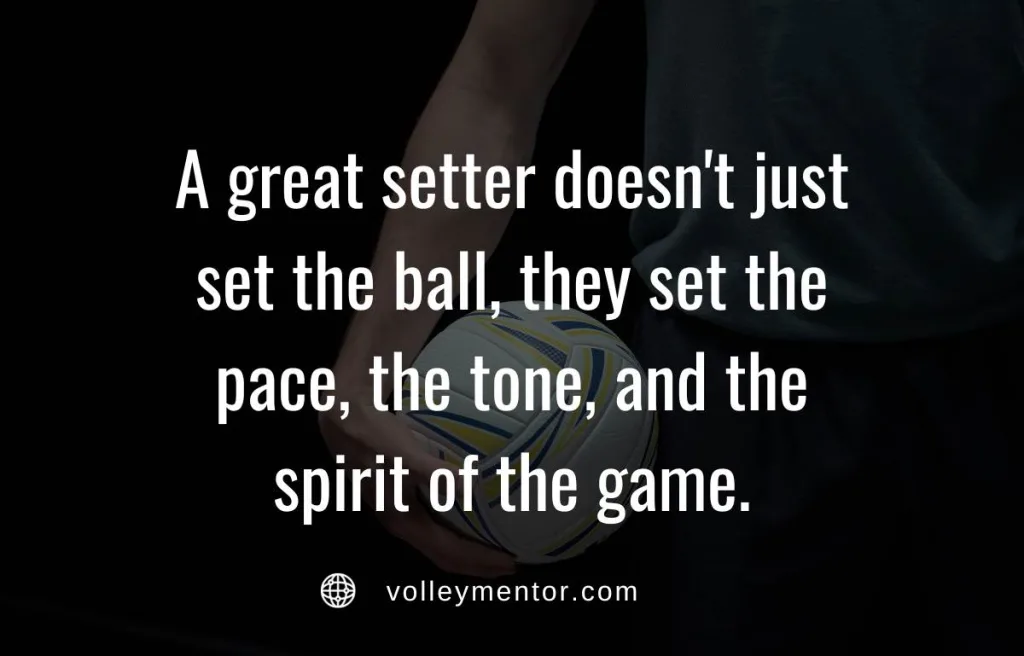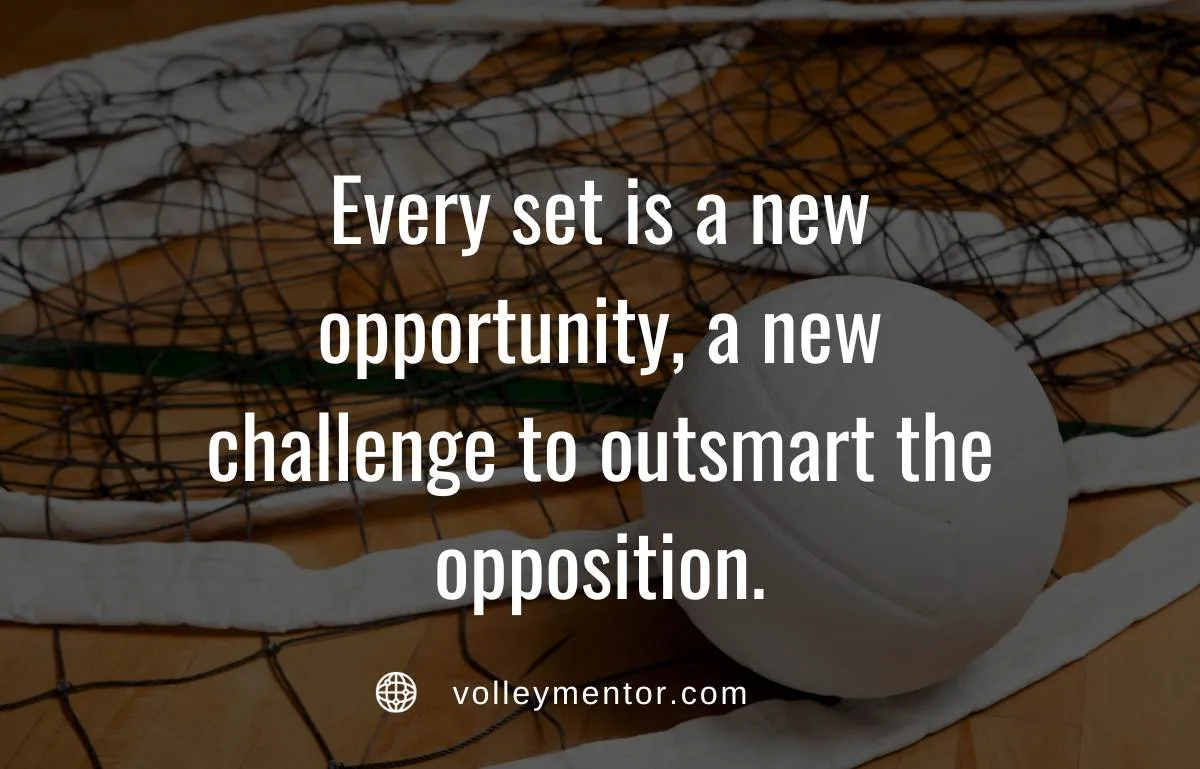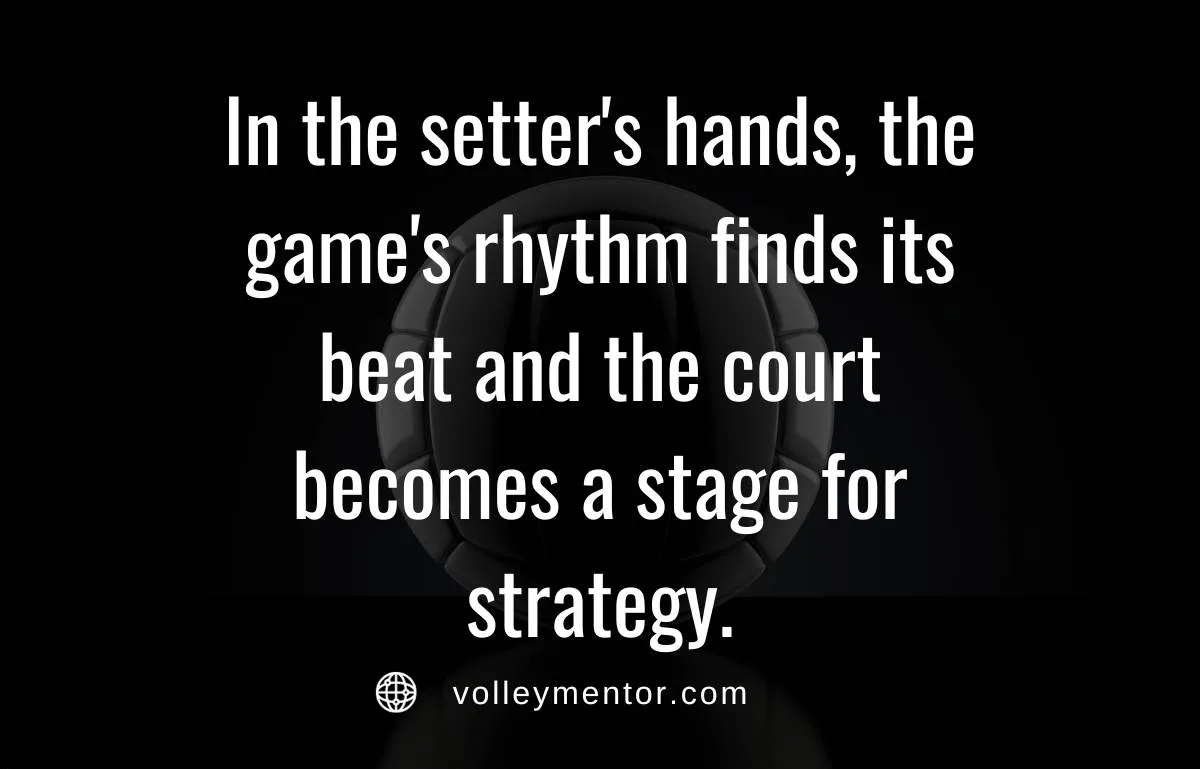Volleyball Setter Position: Skills, Drills & Tips

In volleyball, being a setter is known as the most challenging job on the team.
Think of them as the leader who makes all the big decisions.

They’re right in the middle of every play, deciding who gets the ball and how to outsmart the other team.
Quick Answer: The main job of the volleyball setter is to set up the ball for other players to attack. They must make quick decisions and effectively communicate with hitters to determine the optimal set type for each play.
In this guide, we will look at what it takes to be a great setter.
I will talk about the main jobs of this position and elaborate on the different skills they need.
You will also get insight into some special training exercises and tips for the setters that could help them excel at their role.
So, without any further ado, let’s start!
What is a Setter in Volleyball?
In volleyball, a setter is like the team’s main planner.
They usually touch the ball second on their team, passing it to the hitters so they can try to score.
This role is significant because the setter decides who gets the ball and how to ensure it’s in the best spot for a good hit.
A long time ago, when volleyball was more about keeping the ball in play and less about strong hits, the setter’s job wasn’t as important as it is now.
Today, as volleyball is a faster game with many strategies, this position has become crucial for the team to outrank the opponents.
In the game, you’ll usually find the setter near the front or back on the right side of the court.
It is a good spot for them to pass the ball to different hitters.
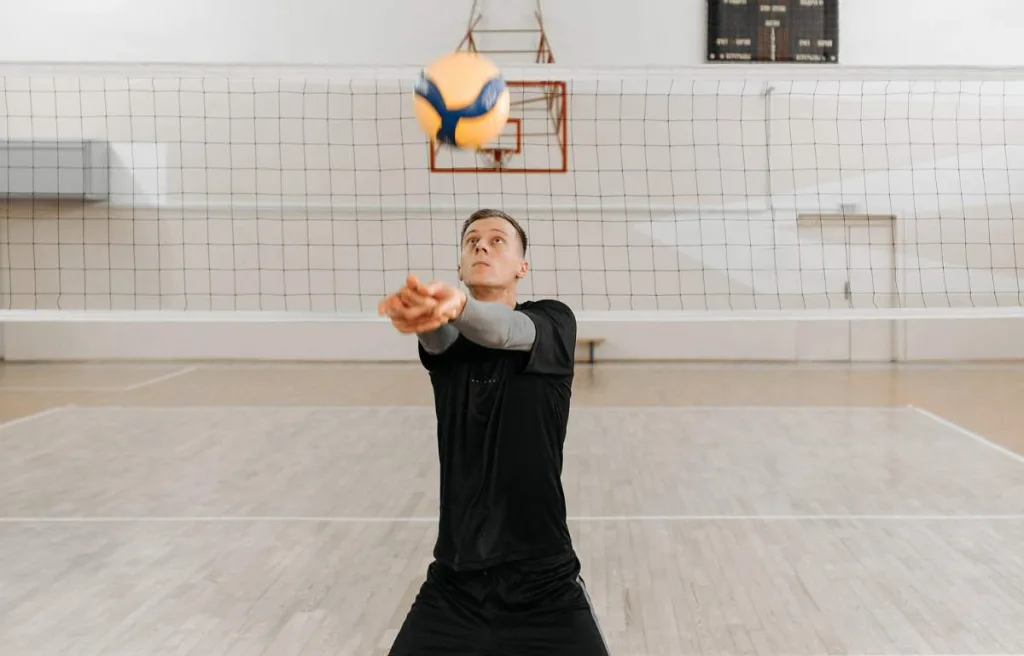
Although the setters might not be the tallest players, they are still great at moving and controlling the ball.
What really stands out about being a setter is their ability to make quick decisions.
Just like every player, setters also take their turn serving the ball.
But what’s unique about them is their ability to give the opposing team a tough time and create more scoring opportunities for their team.
They do this skillfully, hitting the ball over the net when least expected, a clever move known as a ‘dump.’
It surprises the other team and demonstrates the setter’s strategic thinking.
Remember that good setters dedicate significant time to practicing to improve their role.
Their goal is not just to be good at setting the ball but to master it in a way that sets up hitters for maximum kills.
Volleyball Setter Position Rules
I call setters the volleyball team’s brain, as they ensure that everything remains streamlined throughout the lengthy match.
Just like any role on the court, there are specific rules that setters must follow.
It is essential to follow these rules to avoid violations, specifically penalty cards.
Here’s a detailed look at these rules:
- Double Contact: When setting the ball, a setter can’t hit it twice in a row, and the interaction should be clean in one fluid motion. If the ball makes contact with the setter’s hands or arms successively, it results in a double hit violation.
- Lift: Setters need to avoid lifting or carrying the ball. It means they can’t hold or throw the ball. The set should be quick and clean, with the ball only briefly touching the setter’s hands.
- Back Row Attacks: If the setter is in the back row, they must be careful not to jump and attack the ball above the net’s height. Not following this rule will result in a back-row attack fault.
- Blocking: If a setter plays in the back row, they can’t join in on a block. Trying to block the ball from the back row counts as a fault in the game.
- Net Violations: Like all players, setters must avoid touching the net while playing the ball. Any contact with the net during a play is considered a fault and can result in losing a point.
- Crossing the Center Line: Setters must be careful not to cross the center line under the net. Any part of their body crossing into the opponent’s court during play can be called a fault.
- Rotational Order: Setters must follow the rotational order of the team. It means they have to be in the correct position at the time of the serve and can only move to their setting position after the ball is served. If they’re out of order, it’s called a rotational fault, and the team can lose a point.
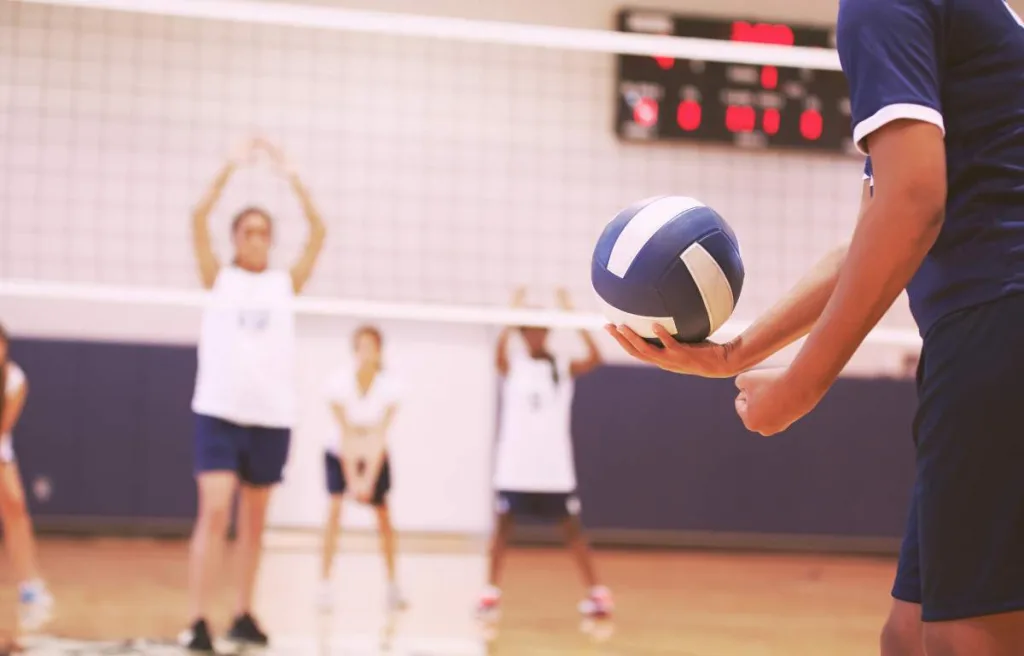
What does a Setter do in Volleyball?
The setter’s role in volleyball combines strategy, skill, and quick thinking.
They are the masterminds behind the scenes, guiding each play with precision and strategy.
Unlike other positions focusing on specific tasks, the setter’s role is complex, demanding a wide range of skills.
Let’s explore the responsibilities of a setter in detail:
1) Mastering the Art of Setting
A setter’s most visible and essential role is to set the ball.
Unlike an outside hitter who primarily focuses on powerful spikes, the setter’s magic lies in their hands.
They judge the ball’s trajectory, the position of their teammates, and the state of play, all within a fraction of a second.
Remember that a setter’s set can differentiate between a powerful spike and a missed opportunity.
For example, a perfect set to a well-positioned outside hitter can easily turn into a point-winning spike.
This act requires physical skill and an understanding of each teammate’s strengths and the opponent’s weaknesses.
2) Serving with Strategy
When it’s time for the setter to serve, their role shifts from strategist to attacker.
Unlike a middle blocker, whose serve might be more about power and height, the setter’s serve is about precision and placement.
They analyze the opposing team’s formation and find the weak spots.
This strategy helps them to serve in a way that disrupts the opponents’ setup.
However, it’s important to remember that scoring amazing serves or aces isn’t typically the primary strength of a setter.
Their serving is an additional advantage over their primary skill, which complements their primary responsibility on the court.
3) Defense: More Than Just Setting
You might be surprised to hear that setters also contribute to the team’s defense.
Firstly, they must participate in blocking when in the front row, though their main focus remains on setting up the next play.
Secondly, their defensive skills are tested differently when in the back row.
They must be ready to dig hard spikes, showcasing agility and quick reflexes.
Now, you understand when someone says the setter’s position is the hardest on the court.
The reason is their versatility and ability to instantly switch from an offensive mindset to a defensive one.
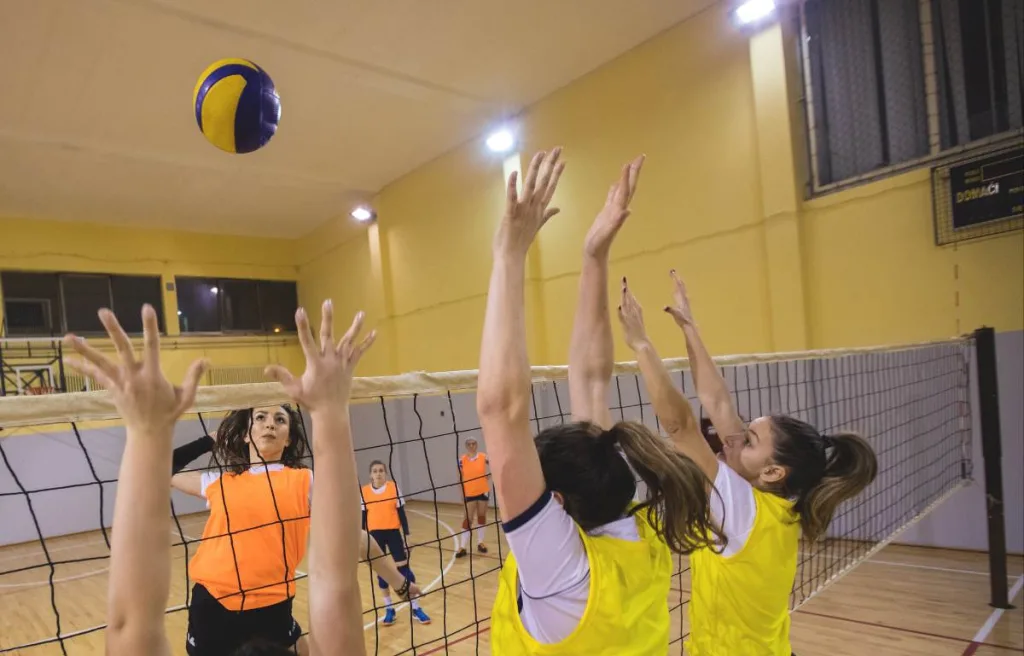
4) The Communication Hub
If you are a setter and reading this article, you can relate to it better.
Basically, the setters are the team’s communication hub and are constantly in dialogue with hitters.
They ensure everyone is on the same page, often adjusting strategies in the middle of the game based on the flow of play.
This constant communication helps the team adapt to changing situations.
Their role is similar to that of a football quarterback, who constantly communicates and adapts strategies with their team.
5) Strategizing and Calling Plays
The setters typically read the game, understand their team’s dynamics, and anticipate the opponent’s moves.
This approach is similar to a libero, who reads the game for defensive plays, but the setter does it for offense.
It’s like being the team’s on-court coach, making quick decisions that can change the game.
The setter needs to understand the game well and think fast to be good at this.
They decide whether to set up a quick attack, a double play, or perhaps trick the opponents with a surprise move like a setter dump.
Tips for Enhancing Performance as a Volleyball Setter
To become the best volleyball setter, you must concentrate on your skills and have the right mindset and strategy.
As a coach, I often share some golden tips for the setters in my team.
These tips have helped them significantly with their on-court performance.
Now, it’s time to share those tips with you as well.
Remember to share your feedback on how these strategies helped you excel on the court.
1) Understanding and Exploiting Weak Rotations
I always say that playing volleyball is similar to a chess game.
Regardless of position, you must think smartly about how your next move could impact the game.
Likewise, the volleyball setter position demands the same level of commitment and smart-mindedness.
Your primary role as a setter should be to outsmart your opposition.
Pay attention to the rotations and identify the weaker players.
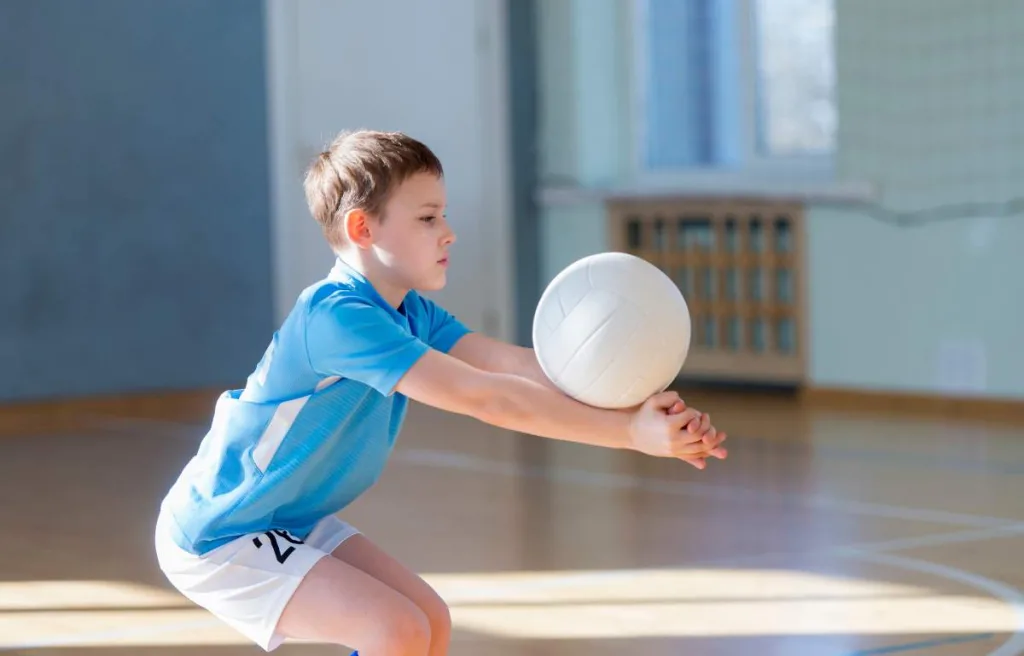
Imagine a scenario where the opposing team has a shorter player struggling with blocks.
If you are an intelligent setter, you will definitely seize this opportunity and direct the play towards this mismatch.
This tactical approach isn’t about randomness but more about strategic wins.
2) Enhancing Physical Strength
The role of a setter is physically demanding, especially on the arms and hands.
Using tools like weighted volleyballs can be highly effective.
These heavier balls train your muscles to handle more weight.
So when you switch back to a regular volleyball, your sets will be more powerful and precise.
Also, engage in core exercises like planks or medicine ball workouts as they improve your stability and enhance your ability to execute quick and powerful sets.
3) Setting Against the Flow
It is a unique concept, but implementing this can help you stand out as a setter.
“Setting against the flow” is a strategic move that can beat the opposing team’s defense.
Consider a standard best-of-five volleyball match.
The ball comes to the setter after a pass.
The game’s natural flow suggests to set this ball in the direction it’s coming from.
However, ‘setting against the flow’ means making an unexpected move and setting the ball in the opposite direction.
Another scenario is that if the pass comes from the left, the opposition’s blockers anticipate a set to the left-side hitter.
However, using this strategy, the setter quickly sets the ball to the right side or even back.
This move leaves the opponents astonished and creates an additional advantage for your hitters.
Remember that this technique requires physical skill and the ability to read the opposition’s movements.
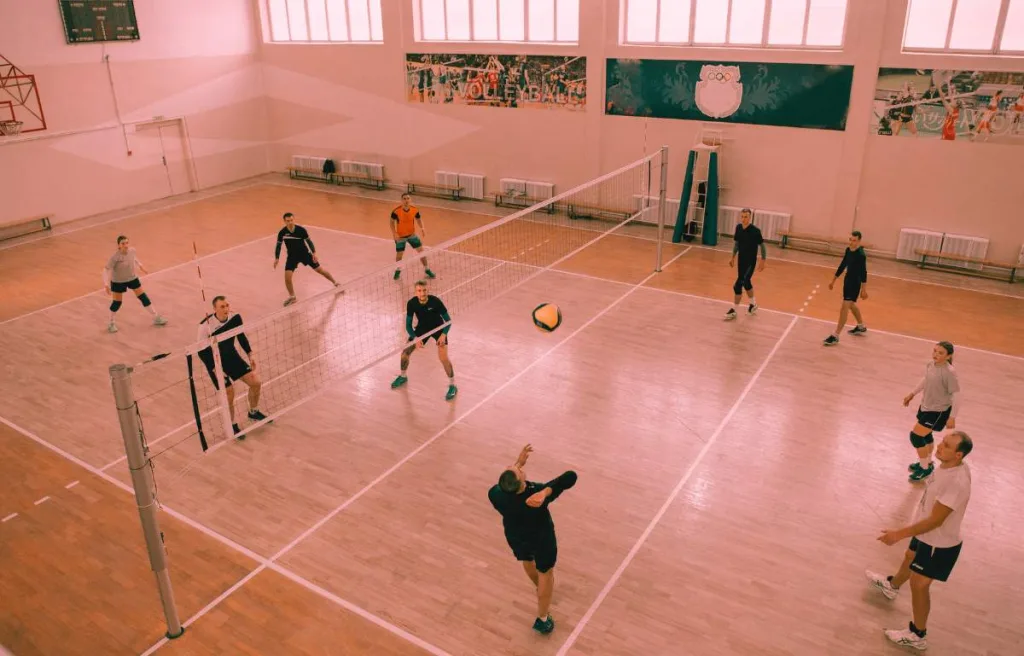
4) Speeding Up Your Play
To improve as a volleyball setter, speeding up your play is crucial.
It means making your sets faster and more unpredictable.
When you start playing volleyball, your sets might be high and slow, giving defenders time to prepare.
But as you get better, your sets should become quicker and lower.
They should make it harder for the opposition’s blockers to react quickly.
Ensure to practice setting the ball with a quick snap of your wrists and reduce the time the ball spends in your hands to speed up your play.
5) Be the leader
As a setter in volleyball, you must be your team’s most lively and positive player.
Think of yourself as the team’s on-court coach.
New players will look up to you for advice and tips.
It’s essential to talk well with your team and help everyone feel easy and good about playing together.
Your energy and positive attitude can really lift up the whole team and make everyone play better.
6) Home Practice for Precision
Setting up a target net at home allows you to replicate the feel of a real game.
It’s like a golfer practising their swing at the driving range.
The more you practice, the more natural and accurate your sets will become.
Also, embrace the philosophy that practice makes perfect.
It’s about setting more than your competitors.
Continually refine your skills, and always look for ways to improve.
7) Work on Foot Speed
As a last tip, the faster you are on your feet, the better you can reach the ball and set it up for your hitters.
Think of it like a dancer.
You need to be light and quick on your feet to keep up with the game’s rhythm.
Try ladder drills to improve your foot speed, enhancing agility and coordination.
Your sets will be more effective as you become faster and more agile.
Also, it will help you to better adapt to quick changes in the game.

What are Good Stats for a Setter?
Tracking a setter’s performance in volleyball involves more than counting assists.
Several key statistics can help gauge how well a setter is doing.
Here’s a simple breakdown in the form of a table:
| Statistic | Description |
|---|---|
| Assists Per Set | It measures how many successful sets a setter makes that lead to points. |
| Setting Efficiency | Accuracy and quality of sets |
| Service Aces | Number of successful serves to lead to points |
| Blocks Per Set | Setters’ defensive blocks made are still counted, even though blocking isn’t their primary role. |
| Digs Per Set | Number of successful ball receptions |
| Errors | Number of mistakes made during play |
While stats are helpful, they only tell part of the story.
A setter’s true value is leadership, decision-making, and the ability to effectively run the team’s offense.
So, while these stats are good indicators, they should be considered alongside the setter’s overall impact on the game.
Essential Qualities of an Outstanding Volleyball Setter
In volleyball, the setter is responsible for handling the second touch and setting the ball for teammates to execute an attack.
This position requires physical traits as well as mental stability.
Remember that an outstanding setter is the cornerstone of a team’s offense.
He requires technical skills and the ability to lead and strategize effectively.
Let me first discuss some physical traits that define a top-notch volleyball setter:
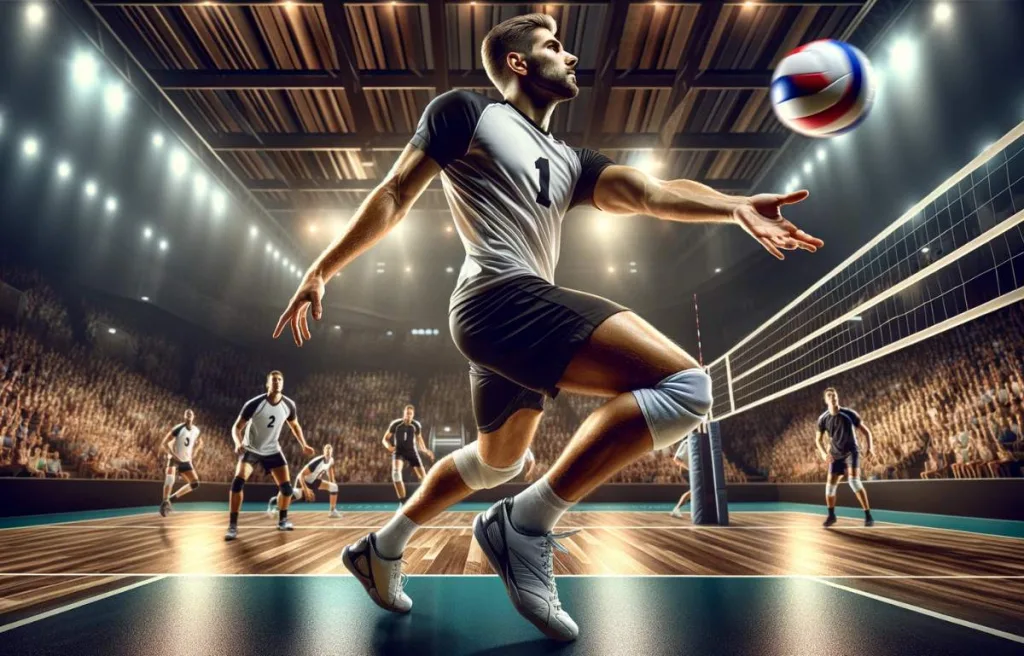
Now, it’s time to discuss the mental characteristics of them:
The Art of the Volleyball Setter Dump
The volleyball setter dump is a clever and strategic move performed by the setter.
This technique involves the setter setting up as if to pass to a hitter.
But at the last second, they push the ball over the net, aiming for an open spot.
The following are the basic steps of this technique:
- Prepare as if setting the ball normally to mislead the opposition.
- At the last moment, instead of setting, quickly and lightly push the ball over the net.
- Aim for an unguarded area on the opponent’s side of the court.
There are some rules to keep in mind while executing it:
The Challenges and Rewards of Being a Setter
Choosing to be a volleyball setter comes with unique challenges and rewards.
It’s a role that demands a lot and offers much in return.
Let me first discuss its challenges.
Now, it’s to discuss some of the rewards that this position offers:
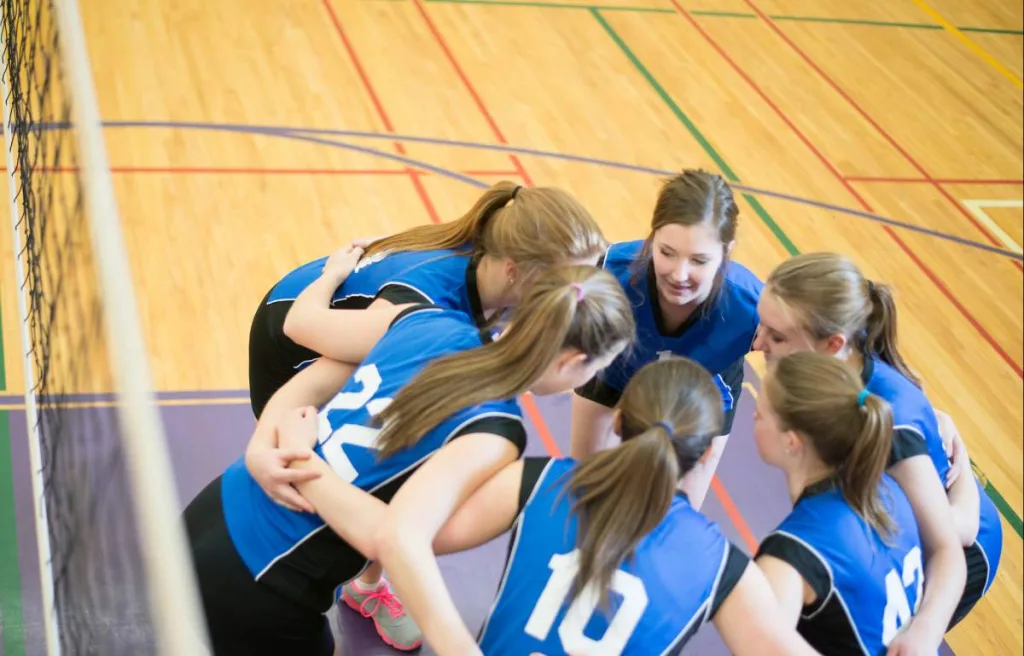
Essential Training Equipment for Volleyball Setters
Many of you reading this guide might be considering a switch to the setter position.
If that’s the case, it’s important to understand that becoming a volleyball setter involves more than raw talent and regular practice.
The right training equipment is crucial in improving the skills for this challenging yet rewarding role.
So, let me discuss some of the crucial equipment that every aspiring volleyball setter should have to excel in this position.
1) Shoes
For a setter, the shoes are more than just footwear.
They are a powerful tool for performance, either during drills or in a real match.
The volleyball shoes for setters typically have excellent lateral support for quick side-to-side movements.
Such shoes also feature exceptional cushioning, which is vital for absorbing the impact during jumps and dives.
I recommend the lightweight design for the setters because it can ensure you support for the swift movements.
Lastly, breathability is vital to keep the feet cool and comfortable during intense matches and practices.
2) Knee Pads
Knee pads are a non-negotiable part of a setter’s gear.
Their role often requires quick dives and sudden kneels, making the knees vulnerable.
Wearing knee pads protects against bruises and scrapes and supports the knee joints.
As a result, the chance of injuries decreases, and you get the confidence to go after every ball, no matter how challenging the play.
3) Setter Target Net
If you are new to volleyball, you might not heard of a setter target net.
It is an innovative tool for fine-tuning the accuracy of setters when they don’t have access to the regular volleyball net.
It allows them to practice hitting specific targets, like real game scenarios.
This focused practice helps improve precision in setting, which is critical for coordinating successful attacks with hitters.
Regularly using it as a setter during your drills can significantly enhance your ability to place the ball exactly where it needs to be.
4) Weighted Volleyball
Like all the gym rats, the setters also need to build their muscular strength, which is essential for setting.
For this purpose, weighted volleyball works like a charm.
It develops arm, hand, and finger strength, leading to more robust and controlled sets.
If a setter consistently trains with a weighted volleyball, it can drastically improve his endurance and ability to handle the rigours of a match.
Drills for Improving Volleyball Setter Skills
To excel as a volleyball setter, it’s crucial to practice drills tailored to enhance your specific skills.
Below, I’ve outlined three highly effective setter drills.
These are among my top recommendations for developing key aspects of your game: precision, speed, and tactical thinking.
So, let’s discuss the step-by-step procedure of each drill.
1) Wall Setting Drill
This drill helps the setters practice hand placement, ball control, and consistency.
It is also helpful for developing muscle memory.
The steps are:
- Stand in a setter’s position facing a wall.
- Set the ball towards the wall with controlled and consistent movements.
- Catch the ball on the rebound without letting it drop.
- Focus on the placement and softness of your hands each time you set the ball.
- Ensure you gradually increase the speed while maintaining control and aim for a consistent rebound spot.
2) Setter Dump Practice
I have already discussed the importance and uniqueness of the setter dump above.
So, to master this skill as a setter, the below drill is highly effective.
The steps of this exercise/drill are:
- Start in a standard setting position, preparing for a regular set.
- Swiftly approach the net.
- Survey the blockers’ and defenders’ positions.
- Now, lightly tap the ball over the net instead of setting it.
- Look for spots on the court where defenders are least likely to reach.
- Repeat to adapt to different in-game scenarios, varying the dump’s speed and trajectory.
3) Target Practice
This drill is perfect for improving the setter’s accuracy and precision.
The steps are:
- Set up multiple targets (such as cones) at various locations on the court.
- From the setter’s position, practice setting the ball to hit these targets.
- Your focus should be adjusting your hand position and the force to control the set.
- Work on both front and back sets.
- Incrementally increase the challenge by moving targets further away
- Alternatively, you can practice by setting the ball from different positions on the court.
Volleyball Setter Quotes
The volleyball setter position demands specific skills and a strategic mindset.
There’s a reason why most coaches and fans call it the toughest position on the court.
Below are motivational quotes to uplift and inspire you in every set, serve, and challenging play.
And remember, if these quotes resonate with you, feel free to share the inspiration on your social media profiles!
Conclusion
Thank you for staying with me until the end of this article.
Now, you should clearly understand what it takes to excel in the volleyball setter position.
Remember, the key to success lies in dedication and consistent practice.
Regularly engaging in drills like wall setting will significantly enhance your skills.
Stay focused on your training.
You’ll see the difference it makes in your game.
Keep pushing forward, and best of luck on your journey to becoming an outstanding volleyball setter!

